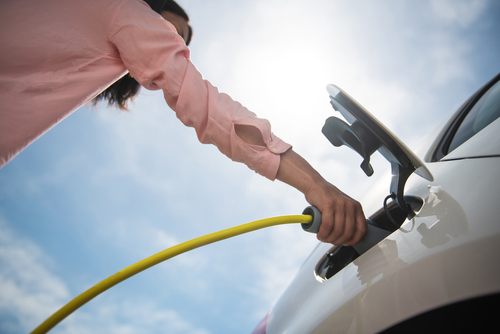Pacific Gas and Electric celebrates progress on path to 3 million EVs by 2030

Pacific Gas and Electric Company (PG&E) celebrated this National Drive Electric Week by touting its progress toward a grid with at least 3 million electric vehicles supported by 2030, and the technological creations helping make it possible.
Currently, approximately 518,000 EVs run on PG&E’s grid – about one-seventh of the nation’s total. While that in and of itself is good for the environment, PG&E also opined about the possibilities they hold as virtual power sources to offset load growth. At 518,000 vehicles, that’s about 6 GW of battery storage capacity largely untapped. PG&E is collaborating with BMW of North America, Ford Motor Company and General Motors to test vehicle-grid-integration (VGI) applications to change that, along with the country’s first large-scale bidirectional charging pilots.
“California is still in the early stages of an exciting energy transformation, and EVs are front and center as we reimagine the energy system for the future,” Jason Glickman, PG&E Executive vice president of engineering, planning and strategy, said. “Bi-directional charging technology is available today that gives EV owners the ability to power their homes in the event of an outage or to offset energy use. We are collaborating with automakers and some of the world’s top innovators to test applications that will enable us to harness the power of EV batteries as a grid resource to support peak electricity demand periods and decarbonize the economy at the lowest societal cost. The technology will also enable EVs to play a big role in offsetting some of the load growth associated with California’s path forward to electrification.”
These pilots provide either ongoing performance-based incentives or higher upfront incentives, offering options to reduce the affordability barriers for all, but especially underserved communities.
Additionally, the company pointed to its multiyear grid investment plan building grid capacity to accommodate new EV demand and partnerships to explore and scale low-cost grid and infrastructure options, second-life battery programs and more, on top of build-outs of large-scale electric infrastructure in general.
Targeted programs focus on making EVs cost efficient as well, like unique rate structures, while education programs seek to expand communal knowledge of EV adoption.
In all, the company expects 70 percent load growth over the next 20 years, and according to Glickman, finding ways to supplement the availability of clean energy during peak evening demand periods and overnight will be key. Hence why the company is betting big on VGI.
